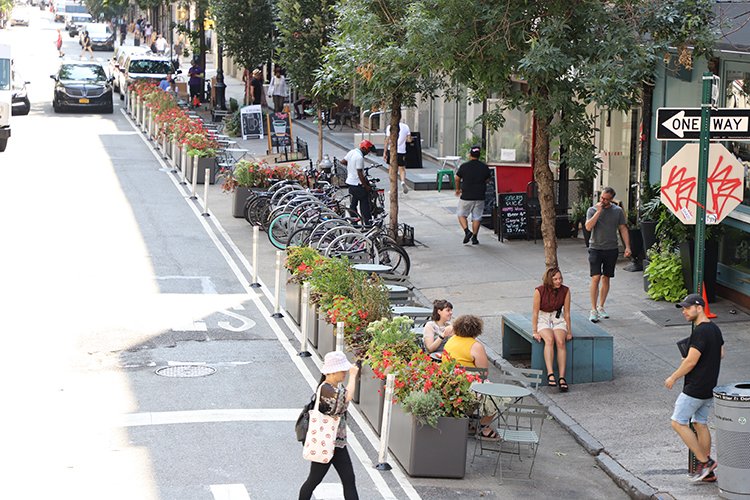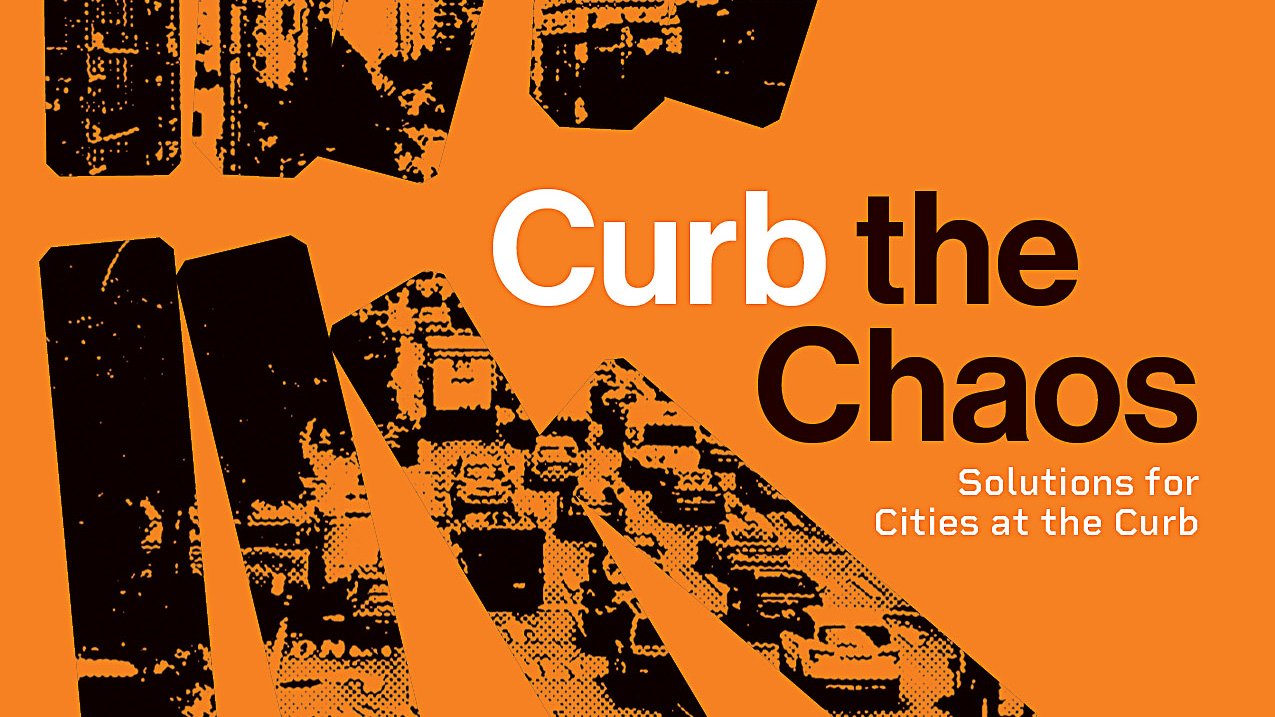Curbside Reform
Our curbside can be dynamic public space - if we stop giving it away to free parking.
The Problem
Curbside space in New York City is currently not managed effectively or holistically, and it has lead to chaos at the curb. There are many competing uses - freight deliveries, food deliveries, trash collection, transit lanes - but the vast majority of the space is designated for the storage of private vehicles.
When a delivery truck pulls up to a building, it’s forced to block the surrounding car traffic, bus lanes or micromobility lanes. While car owners feel entitled to free curbside parking, cyclists search for scarce and informal spots to lock up. While New York City’s trash bags pile up on the sidewalk and block pedestrians’ way, the average car sits in a parking spot, unused, 95% of the time. This is not the way a 21st-century city should be designed.
The Solution: A New Curb Framework
The DOT should actively manage the curb with a holistic planning approach that prioritizes allocating curb space to those uses that provide the greatest amount of access and serve the highest number of people. While the NYC Streets Plan recognizes the need for curbside management and parking reform, there is little detail on what this might look like.
Streets are public spaces that should be publicly accessible - and that includes the space at the curb. Allocating a few paid parking spaces on each block makes sense, but there are so many other uses for that space that would benefit the public: neckdowns at intersections to keep pedestrians safe, loading zones that would reduce double parking (and honking and idling), bike corrals that fit ten bikes in the space of one car, trash corrals, car share spots, parklets with benches and trees.
Open Plans has formed a diverse coalition of businesses and organizations asking the Adams administration to prioritize curbside reform.
Reimagining the Curb
Recommendations for the Adams Administration
-
⦿ Expand commercial loading zones and the Neighborhood Loading Zone program so that there are enough loading zones in both commercial and residential neighborhoods.
⦿ Increase enforcement of loading zones so that commercial trucks can actually use them, rather than being forced to double park.
⦿ Continue the Open Restaurants program with fees that value the public space but do not place an onerous burden on restaurants and other small businesses.
⦿ Establish dedicated short-term pick-up and drop-off zones for on-demand food and goods delivery in priority areas.
-
⦿ Speed up buses with physically separated bus lanes.
⦿ Truly protect bicyclists and other micromobility users - including delivery workers - with physically protected bike lanes.
⦿ Increase enforcement of blocked bike lanes and bus lanes, and continue enforcement of double parking.
⦿ Install secure bike parking to help facilitate mode shift.
⦿ Reallocate space for active transportation.
-
⦿ Continue to push the state for local control of camera-based enforcement and the ability to lower speed limits.
⦿ Improve safety with daylighting and neckdowns at intersections and other traffic calming measures.
⦿ Create dedicated zones for passenger pick-up and drop-off, including for Access-A-Ride.
-
⦿ Get the trash off our sidewalks with curbside trash corrals and containerization - expand the new pilot program citywide.
⦿ Increase enforcement around street cleaning so that the streets are actually cleaned on street-sweeping days.
-
⦿ Create a hierarchy of uses of the curb, with transportation, deliveries and sanitation. being the highest priority and free, long-term storage of private vehicles being the lowest priority in most areas.
⦿ Expand sidewalks, plazas, parklets, and other public space.
⦿ Price the curb appropriately with more metered parking (variable pricing and escalating pricing) to encourage parking turnover.
⦿ Eliminate or severely reduce the number of parking placards issued and strictly enforce compliance.




